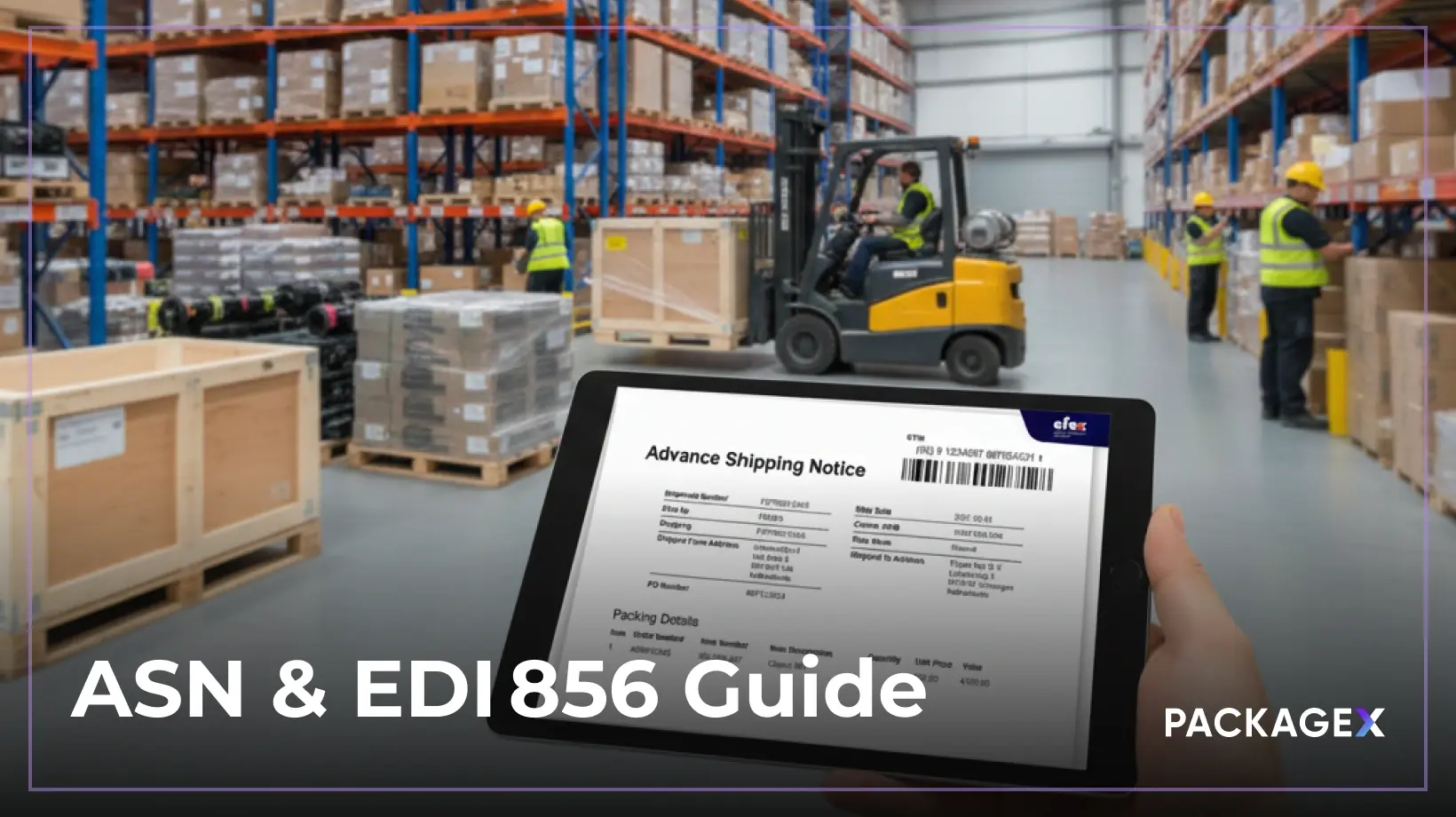AI is transforming industries at an unprecedented pace. In just a few years, tools like ChatGPT have redefined how businesses automate workflows, analyze data, and make real-time decisions.
From Klarna replacing its reliance on traditional SaaS providers with in-house AI models to Morgan Stanley using AI to empower wealth advisors with tailored investment strategies, AI is making industries smarter, faster, and more efficient. Snowflake has also integrated OpenAI models into its cloud analytics platform, unlocking advanced data analysis capabilities for enterprises.
Despite these groundbreaking advancements, the $12 trillion logistics sector—responsible for managing the global flow of goods, from raw materials to finished products—still relies on outdated systems that create inefficiencies at every stage, from order fulfillment to returns. The industry needs its own ‘ChatGPT moment’ to stay competitive in an increasingly AI-driven world.
Logistics at an Inflection Point
For decades, logistics has relied on manual workflows, siloed systems, and outdated processes. But with e-commerce demand surging, labor shortages intensifying, customer expectations rising, and supply chains growing more complex, these inefficiencies are no longer just operational headaches—they’re direct threats to growth, profitability, and customer satisfaction.
The rise of AI presents an opportunity to reshape the logistics industry, offering solutions to streamline operations, enhance accuracy, and provide real-time visibility across the supply chain. This is a critical moment: businesses that adopt AI will gain a competitive edge, while those that delay will risk falling behind.
Possibly the biggest threat? Bad data.
In an industry where every second counts, relying on fragmented, inaccurate, or delayed data is no longer sustainable.
The Logistics Bottleneck: Bad Data
The Data Warehousing Institute estimates that bad or incomplete data costs companies over $600 billion annually. This staggering cost highlights how important clean, structured data is to the industry.
Just as marketing teams rely on accurate data to track leads and campaigns, logistics demands precise, real-time data at every stage, from forecasting, inbound logistics, and inventory management to order fulfillment, outbound logistics, and returns.
Without it, inefficiencies cascade downstream, which leads to wasted time, money, and resources. Take inbound logistics, for example. If a shipment arrives with mislabeled barcodes or incorrect quantities, verifying it becomes difficult, and inventory counts can be thrown off before products even hit the shelves. Similarly, inaccurate data in order fulfillment can lead to mispicks, difficulties finding products, and incorrect shipments, which can increase returns and customer dissatisfaction.
If healthcare can have its AI-powered diagnostics and personalized treatment breakthroughs and finance can have its algorithmic trading and fraud detection revolutions, then why is logistics still battling manual barcode scanning and paper-based receiving logs that actively contribute to bad data?
The answer? Logistics has lacked the right AI-driven technology to fix the problem at scale. Until now.
Smarter Data Capture: The Foundation of Change
Poor data capture remains one of the biggest pain points in logistics, whether it’s scanning barcodes, processing shipping labels, or inputting data into inventory systems.
This is mainly due to an overreliance on manual processes, as I’ve highlighted, but also, and perhaps more importantly, due to traditional OCR tools that struggle in real-world conditions. When labels are damaged, lighting is poor, or multiple barcodes appear on a package, these rigid systems fail to capture data accurately and instead create bottlenecks.
The solution? AI scanning technology is designed to handle the complexities of modern logistics with speed, accuracy, and adaptability.
AI Scanning: The Breakthrough Logistics Needs
At PackageX, we’re already solving this problem with AI-powered scanning. AI scanning combines OCR, barcode recognition, and computer vision to capture data with over 95% accuracy, even in challenging conditions.
Unlike traditional barcode scanners and OCR tools, AI scanning:
- Processes multiple barcodes at once, so there’s no need to scan items individually.
- Recognizes damaged or blurry labels, which removes human error from the equation.
- Works in low-light conditions to eliminate one of the biggest OCR pain points.
- Instantly validates shipments to prevent inventory mismatches before they happen.
- Seamlessly updates WMS, IMS, and BMS systems in real-time to create a single source of truth.
But fixing data capture is only the first step to achieving anything that even remotely resembles a ‘ChatGPT moment.’ The real transformation will only happen when AI connects logistics workflows end-to-end and eliminates silos between planning, receiving, fulfillment, and returns.
Connected Workflows: Turning Data Into Seamless Operations
Logistics also needs a way to instantly act on the data it receives. Without this, each logistics stage operates in isolation, remaining efficient but disconnected from the rest of the system. As a result, businesses are left addressing issues after they arise instead of preventing them from the start.
That’s where connected workflows come in.
What Are Connected Workflows?
Connected workflows are automated processes powered by accurate data. They link every stage of logistics to eliminate silos and create a system that’s proactive, scalable, and efficient.
Examples include:
- Planning: AI adjusting labor and transport resources based on demand forecasts.
- Receiving: Warehouse locations are automatically assigned as shipments are scanned.
- Fulfillment: AI optimizes picking routes and automates label generation based on inventory data.
- Returns processing: Returned goods are automatically classified for restocking, repair, or disposal.
With connected workflows, logistics doesn’t just react; it anticipates and adapts to data around it.
Predictive & Adaptive Logistics: The Future of Workflows
The future of logistics isn’t just about automating processes; it’s about creating a supply chain that predicts and adapts in real-time. We’re already seeing this in action as we speak:
- Predictive workflows are using AI to identify bottlenecks and resolve them proactively. For example, AI can trigger stock replenishments before inventory levels run low to optimize order fulfillment.
- Adaptive workflows are dynamically adjusting to disruptions as they happen. For example, AI can reroute shipments or reallocate inventory during unexpected delays.
These changes aren’t just an incremental improvement but a fundamental shift in how our industry is operating.
So, What Will the AI-Powered Future of Logistics Look Like?
AI-powered logistics will be more than just automation; it will focus on creating an intelligent, interconnected, and adaptive supply chain. In this shift, AI-powered logistics will:
- Capture data instantly and accurately so it’s clean and reliable throughout the logistics process, regardless of conditions.
- Link logistical processes seamlessly across planning, inventory, fulfillment, and returns with connected workflows.
- Adapt dynamically in real-time by proactively responding to disruptions, rerouting shipments, optimizing workflows, and reallocating resources as conditions change.
While we’re already seeing early signs of this shift, the true breakthrough lies ahead. AI-powered logistics will soon become the industry norm, and companies that act now will define that future.
AI That Truly Works Is the Future of Logistics
Logistics cannot afford to continue using old systems. Now more than ever, an AI-driven transformation is needed, particularly as e-commerce demand, labor shortages, and customer expectations continue to rise.
This shift starts with accurate, real-time data, which is the foundation of efficient operations from planning to fulfillment. AI-powered scanning ensures companies capture and process this data reliably and eliminate the errors and inefficiencies of manual workflows.
However, cleaning data is just the first step. The real breakthrough will happen when AI connects the entire supply chain by using connected workflows to eliminate silos, scale operations, and adapt in real-time.
The companies that embrace this shift will lead the industry, while those that don’t will struggle to keep up.
Don’t let outdated processes slow you down. See how PackageX delivers AI that works by scheduling a demo today.


.webp)
